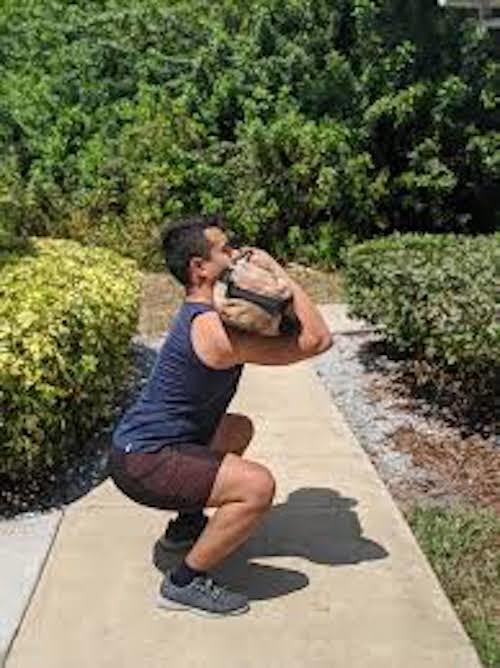Relieve Pandemic Stress In 5 Innovative Ways

You will need to relieve pandemic stress this winter, because this virus is going to be more threatening. Get prepared. Learn five innovative ways to get calm in the face of a raging Covid.
Check out my Covid Immunity CourseWith winter coming, you may need some good ideas to relieve pandemic stress, because hitching a ride with winter will be a ramped-up SARS-CoV-2, and consequently more COVID-19 illness.
This winter the pandemic is expected to intensify the depression experienced by many people with “SAD”, the syndrome known as “seasonal affective disorder.” Sad but true that SAD routinely pops up each year when the daylight hours ebb in fall in the Northern hemispheres and quickly lead to winter.
Even without Covid, five percent of us experience full-blown SAD syndrome, and many more deal with a milder version of SAD, referred to as the “winter blues,” that saps our energy and enthusiasm for life. Add the anxiety of Covid to the mix, and all that it entails in terms of social distancing, mask wearing, sick friends/family and an anemic economy, and you get many more SAD people this winter than usual.
Given this, we need to proactively dial in whatever actions we can to manage our mental and emotional health. It’s more vital now than ever to commit to getting engaged with activities and people you enjoy, as well as cultivating some new mindfulness habits that are very helpful to relieve pandemic stress.
To that end, what follows are five innovative, proven ways for you to relieve pandemic stress.
1. Walk Into The Light
A helpful way to relieve pandemic stress is to get exposure to sunlight or its artificial equivalent. Dr. Norman E. Rosenthal, the psychiatrist who in the 1980s first identified SAD as a real thing, says it’s most helpful for people with SAD to be exposed to sunlight or its artificial equivalent for 20 to 30 minutes every morning. [1]
The standard amount of light needed is 10,000 lux. Sitting under a commercial light box at least one-foot square will do the job. Also helpful is using a dawn simulator in the bedroom or a light set on a timer to turn on 10 or 20 minutes before you get up.
Better yet, go take a morning walk — preferably in nature.
“A 20-minute early morning walk in the sun is as good as commercial light therapy,” says Dr. Rosenthal, “but while morning is best, whenever you can do a walk is helpful. The combination of exercise and outdoor light is crucially important. It connects you with your environment — not just the light but also the birds, trees, animal life, neighborhood — all can act as an antidote to the cocoon of isolation.”
The point is to get some regular exercise — so important for immune system health — and to get some anxiety-relieving awe into your life.
Spend time outside. Watch birds chatter. Hug a tree, or if that’s too intimate (or silly) for you, sit down and lean against one after a lung-expanding, mind-calming nature walk. Recent research shows that consciously taking in the wonders of nature amplifies the mental health benefits of walking.
Numerous studies indicate that spending time in nature and walking on quiet, tree-lined paths can augment mental health, and even promote physical changes to the brain. Scans show that nature walkers have “quieter” brains.
(Read my post: Let Nature Strengthen Your Immune System.)
2. Move For Just 3 Minutes
Don’t have a forest or park to walk in?
How about three minutes — got those?
Get up and move just for three minutes, but make sure you do it regularly, like hourly.
It just takes a short burst of exercise — three minutes to be exact — to improve your mood, says Kelly McGonigal, a health psychologist and lecturer at Stanford University whose latest book is The Joy of Movement. Do jumping jacks, jump rope, stairs, squats, burpees dance — whatever gets your heart pumping and your lungs expanding.
Making your muscles work, including your heart muscle, gives you a shot of dopamine, and gives you the sense that you’re alive and engaged.
3. Move Under Load
By “move under load” I’m referring to resistance training, whereby whatever movement you do is done under the “load” of your own body weight, or added weight, such as dumb bells or barbells and the like.
I can speak from personal experience that resistance training can relieve pandemic stress, or the stress and anxiety evoked by any other reason.
A new study about anxiety and resistance training supports my assertion. The study examined the effect of regular weight training on young adults and found that it substantially reduces anxiety, a finding with particular relevance during these unsettling, pandemic-ridden days. (By the way, I’d wager my last donut that the same results would occur from a cohort of older adults as well.)
Many studies have confirmed the anxiety and depression-relieving effects of aerobic exercise (running, biking, swimming), but scientists have only recently examined if resistance training might also elevate feelings of happiness and contentment, thereby improving mental health.
Now we know it does.
A 2018 review of studies concluded that adults who lift weights are less likely to develop depression than those who never lift. In another study, women with clinical anxiety disorders reported fewer symptoms after taking up either aerobic or weight training.
Even so, there’s been push-back against the validity of the conclusions of such studies as applied to the general population that makes two basic assertions:
- The exercise routines used were too complicated or too difficult for the general population to use without the guidance of researchers; and/or
- The cohorts of study volunteers were men and women with a diagnosed mental health condition like depression or an anxiety disorder, limiting their applicability to the general population.
So, what was needed as yet another study to measure the general applicability of the anxiety/stress-reducing results enjoyed from resistance training, and that’s just what a new study did.
Researchers at the University of Limerick in Ireland recruited emotionally and physically healthy men and women to evaluate if a simple version of weight training could have benefits for mood in people who already were in generally good mental health. [2]
The volunteers were separated into two groups: a control group who did not weigh train, and one that did. During eight weeks of weight training, the anxiety levels of both groups were tested repeatedly.
As expected, the control group retained their original low levels of anxiety. They still felt about as tranquil as eight weeks before. The weight trainers, however, scored about 20 percent better on the tests of anxiety. They had started with low levels of anxiety to begin with, but felt even less anxious after the eight weeks of weight training.
This effect was larger than anticipated. The benefits for mental health were greater, in fact, than those often seen in studies of aerobic exercise and anxiety. And so, if you’re riddled with anxiety and need to relieve pandemic stress, or that of any other variety, do some regular resistance training.
For resistance training guidance, check out:
4. Breathe Better by Breathing With Intention
Too many of us are “vertical breathers” — our shoulders rise with each inhalation and fall as we exhale. That way of breathing does not engage our diaphragm, that flat sheet of muscle responsible for breathing.
To breathe better and help relieve pandemic stress become a horizontal breather. Inhale and push your belly out, which means you’re using your diaphragm, and at the same time let that inhalation expand your rib cage from front to back, as well as your chest. Exhale and let it all relax.

The diaphragm essentially pulls and pushes against the lung causing it to expand with inhalation and contract with exhalation.
I recommend:
Now that you’re breathing better, apply that technique to the 4x4x4 method to get calm when facing a particularly stressful moment. The military uses it to help deal with the stress of warfare, perhaps a tad more monumental than pandemic stress.
Here’s how you do 4x4x4:
- Whether sitting or standing, get your posture erect but relaxed.
- Deeply inhale through your nose such that the entire trunk of your body, from lower abdomen to throat, front and back, expands.
- Count four seconds in, pause for four seconds, four second exhale, pause for four seconds — that’s one set — and repeat.
- Use the Ujjay breath( shown in this video) which is the breath you would use to fog a mirror, but using your nose, not mouth.
- After two warm-up breaths, glance at the first item of your card, close your eyes, and as you focus on that item (silently repeating and/or visualizing it), do the breath work, one set per item on your card.
5. Relieve Pandemic Stress With Aromatics
Speaking of breathing, why not make the air you breathe in scented when you feel like you need to relieve pandemic stress?
Try taking a foot bath with lavender oil, burn a scented candle or spritz the air with orange aromatherapy.
A study of 141 pregnant women found that rubbing or soaking feet with lavender significantly reduced anxiety, stress and depression.
Another study of 200 dental patients found that orange or lavender aromatherapy helped them relax before treatment. Lavender baths lower cortisol levels in infants. Even antidepressants work better when combined with lavender therapy.
Your Takeaway On How To Relieve Pandemic Stress
Remember these five things:
- The pandemic will be more challenging this winter than before. If you’ve been anxious up to now, the next few months are likely to up the ante, and so get motivated to manage what you’ll be facing.
- Get out of the house in the morning to seek sunshine and get your body moving with some walking, preferably somewhere in nature.
- At a minimum, get off your duff every hour and do some movement that gets your breathing and heart pumping for three minutes.
- Better yet (or in addition to) do some resistance training at least thrice per week.
- Breath in and/or bathe your feet in some essential oils: orange tends to be invigorating; lavender calming.
Last Updated on September 29, 2022 by Joe Garma





